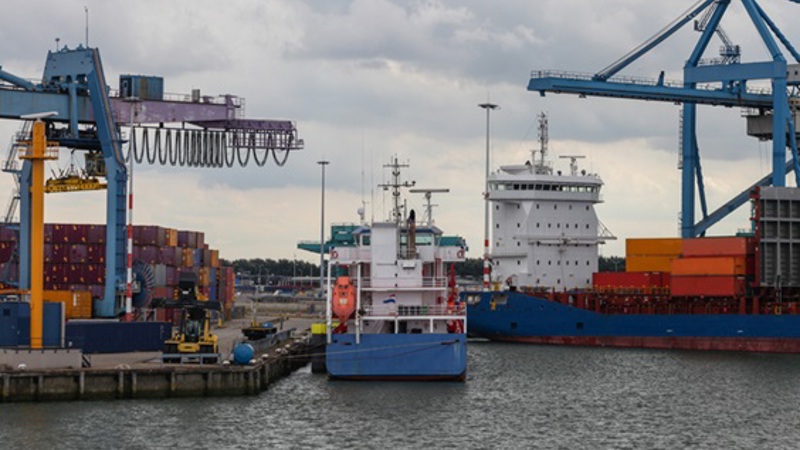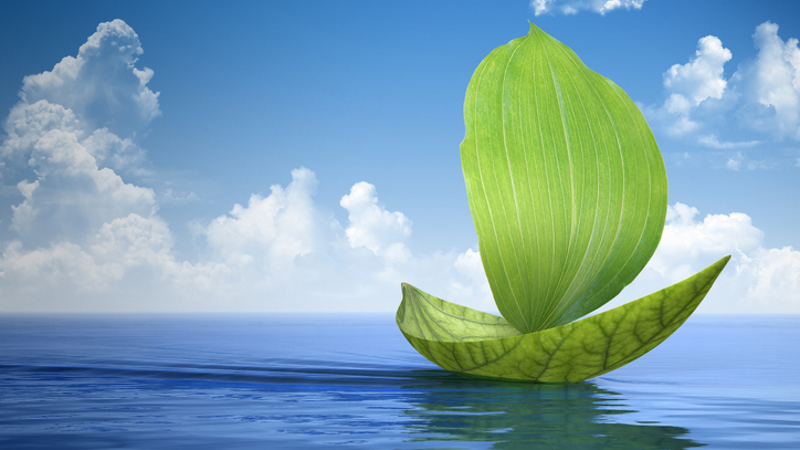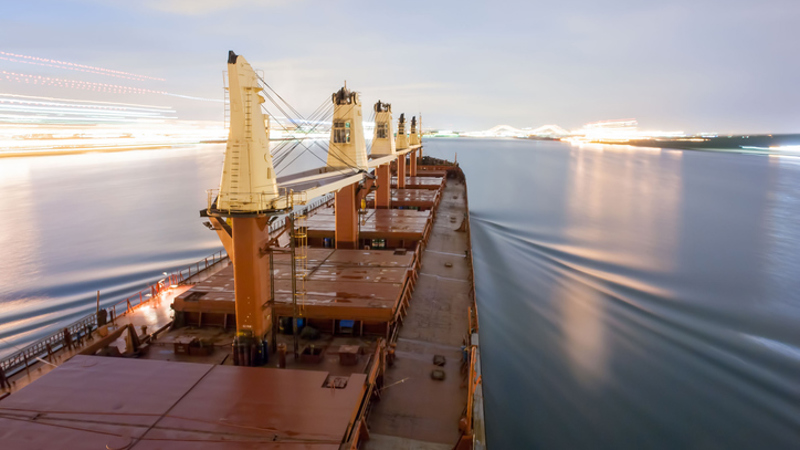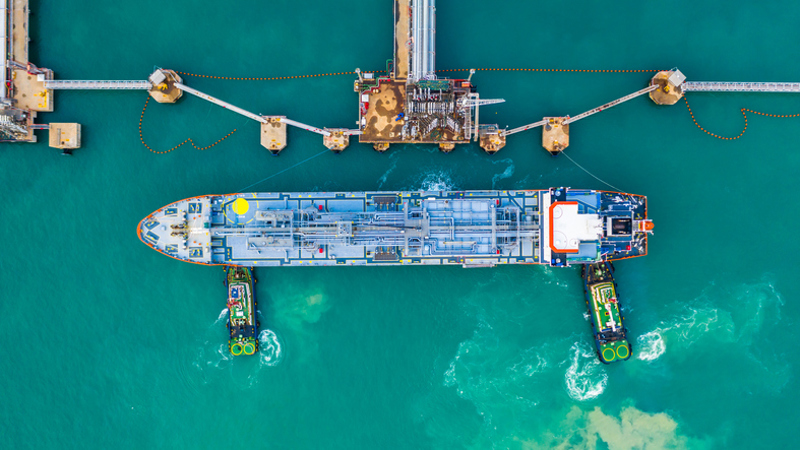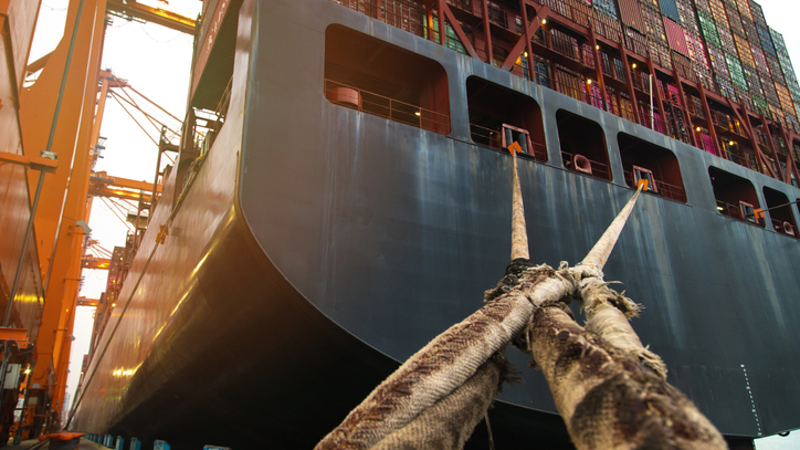Collision 'Solong' and 'Stena Immaculate' shows gap in international regulations
March 2024
In addition to a personal tragedy and serious environmental damage, the collision between the "Stena Immaculate" and the "Solong" in the North Sea on 10 March 2025 shows the gap in applicable international regulations regarding civil liability related to 'hazardous and noxious substances' on board ships. With increasing use of alternative fuels by ships, the importance of adequate international regulations to establish liability and compensation for injured parties is only increasing.
Prevention and safety net
International shipping is one of the safest modes of transport. Under widely endorsed international regulations, including the International Convention for the Prevention of Pollution from Ships (MARPOL), ships are obliged to comply with a large number of safety measures. Compliance with the agreed standards is checked by classification societies and during so-called port state controls.
Nevertheless, maritime incidents occasionally occur, the consequences of which may be quite serious. A recent example is the collision between the "Stena Immaculate" and the "Solong" in the North Sea on 10 March 2025. At the time of writing this article, it is unclear what the exact cause of the collision was, who is liable for the collision, and what and how much damage was caused.[1] What is known, however, is that at least one crew member likely lost his life and that the damage to the environment will be significant.[2]
Historic oil spills caused by oil tankers like the "Exxon Valdez" and the "Erika" have made it clear that safety regulations for maritime incidents are insufficient. In the event of an incident, there must also be a legal and financial, preferably internationally broad-based, safety net. For example, the disaster of the oil tanker "Erika" that got into trouble in the Bay of Biscay in 1999 resulted in total damages of €388 million.[3] Even if liability of for example the shipowner can be established under the applicable law, it is unlikely that financial recovery for such an amount can be obtained.[4]
The various oil spills have therefore led to the development of a robust international liability and compensation system for oil spills involving seagoing vessels.
Oil in marine vessels; tankers and bunkers
Under the 1992 Civil Liability Convention[5] ("CLC"), in the event of an incident involving an oil tanker, the shipowner is in principle liable for the pollution caused by it. Therefore, unless there are very special external circumstances (such as war or terrorism or a fault of a public authority), no fault on the part of the shipowner needs to proven. This strict liability of the shipowner avoids extensive discussions about what faults were or were not committed by whom, and whether or not those faults lead to liability under applicable law.
However, the shipowner's liability under the CLC is not unlimited; the convention determines the maximum amount of damage to be compensated based on the ship's tonnage. That maximum amount of liability must be insured with a reputable liability insurer. Moreover, injured parties have a direct claim for that maximum amount against the shipowner's liability insurer. Therefore, the latter cannot escape liability, for instance if the shipowner becomes insolvent. To the extent that the total damage caused by the incident exceeds the maximum limitation amount, there is additional financial compensation available under the 1992 Fund Convention and the 2003 Supplementary Fund Convention[6]. Under these conventions, supplementary payments are made to parties who have suffered damages up to total amounts of SDR 200 million[7] (approximately €244 million) and SDR 750 million (approximately €915 million), respectively. Additional compensation under the Fund Conventions is paid by oil receiving companies, that pay contributions to the IOPC Fund.[8]
The CLC and Fund Conventions’ system applies to incidents involving oil tankers and ships that can carry oil and do so or have done so recently and still have residues on board.[9] The system does not extend to other ships carrying oil for use as fuel, also referred to as bunkers. Incidents involving such ships are covered by the Bunker Pollution Convention[10] . The Bunker Pollution Convention provides for strict liability of (various) parties interested in the ship, compulsory insurance and a direct claim against the liability insurer. Unlike the CLC, the Bunker pollution Convention does not specify the amount to which liability is limited. It does allow the ship's stakeholders to invoke limitation available under (inter)national regimes, including the Convention on Limitation of Liability for Maritime Claims, 1976, as amended by Protocol 1996 ("LLMC 1996"). Whether and if so what limitation can be invoked varies from country to country. European regulations require shipowners to insure their liability up to the maximum amounts specified in this Convention.[11]
The regime that deals with oil pollution from ships is very successful. Not only have the conventions been ratified by many countries and there is broad international support, but in case of incidents, compensation usually takes place without significant problems. The Netherlands is party to the CLC, the Fund Conventions and the Bunker Convention.
Hazardous and noxious substances ("HNS")
However, as the collision between the "Solong" and the "Stena Immaculate" also shows, oil is not the only substance that causes significant damage in the event of an incident. Incidents involving substances such as LNG, ammonia and other chemicals can also result in significant damage. To improve the aftermath of incidents in which such 'hazardous & noxious substances' ("HNS") are carried as cargo on board ships, the HNS Convention was adopted in 1996 and amended by protocol in 2010 ("2010 HNS Convention").[12] The convention regulates compensation for damage caused by HNS carried as cargo in a similar manner as the CLC and Fund Conventions do for oil. Also under the 2010 HNS Convention, there is strict liability of the shipowner, compulsory insurance, a direct action against the insurer up to a maximum amount. For compensation of damages above the maximum amount, there is additional financial compensation by payment out a fund paid by the recipients of the HNS. Unlike under the CLC and Fund Conventions, not only damage due to pollution and costs of preventive measures are covered, but also claims for loss of life and personal injury are eligible for compensation.
However, the 2010 HNS Convention has still not entered into force. Together with Belgium and Germany, the Netherlands intends to ratify the convention in 2025.[13] After these ratifications, one more country would need to ratify the convention to reach the minimum number of 12 countries to have the same enter into force.[14] Moreover, limited support does not result in a regime that will generally apply in case of incidents.
Back to the recent collision in the North Sea. Shortly after the incident, the press reported that the "Solong" would have been carrying 15 containers of sodium cyanide at the time of the collision. Later, this information turned out to be incorrect. The "Stena Immaculate" was reportedly carrying jet fuel.[15] Both sodium cyanide and jet fuel seem to qualify as HNS. Had the HNS Convention been in force, the damage caused by the collision between the "Stena Immaculate" and the "Solong" would in principle have fallen in the regime’s scope.[16]
Alternative fuels
However, the 2010 HNS Convention does not cover hazardous substances that are only present on board ships as bunkers (fuel for the ship in question). Damages caused by shipping incidents involving such substances, including LNG, in principle do not fall within the scope of the 2010 HNS Convention. So even if the HNS Convention enters into force, a significant category of incidents without international regulation will remain. With increasing pressure to sail on alternative fuels - including from the IMO and the EU[17] - the number of ships carrying HNS as fuel will only increase (as will the number of ships that will carry these substances as cargo in the supply chain). No international regulatory framework exists (yet) for incidents involving such substances. The Maritime Decarbonisation Working Group of the International Maritime Law Association (Comité Maritime International) identified that regulatory gap in May 2024 and made recommendations to repair the same.[18] In December 2024, several states, including the Netherlands, made a request to the International Maritime Organisation ("IMO"), to start investigating and following up on this gap.[19] In week 13, it will be known whether the IMO legal committee will indeed start working on this issue.
Wreck Removal Convention
With regard to the clean-up of ships and substances that were on board at the time of incidents, the Nairobi Wreck Removal Convention[20] also plays an important role. Coastal states may take action under that convention if 'wrecks' in the broad convention definition, including items that have been on board, constitute a hazard. They may require owners of the affected ships to take action. Under the Wreck Removal Convention, the shipowner is liable for the costs incurred by the government of a state party to the convention itself, albeit that this convention also allows reliance on a limitation of liability. The Netherlands has chosen not to allow the shipowner to limit its liability for wreck removal costs. However, that does not mean that liability is indeed unlimited either. [21]
The Wrecks Convention does not regulate the shipowner's civil liability to other damaging (civil) parties.
Regulatory framework
In terms of maritime risks, the focus in recent years has mainly been on the so-called dark fleet, or ships sailing under less stringent flags, which often fail to comply with international safety measures and/or insurance obligations.[22] Indeed, these ships pose a risk that cannot be underestimated. However, in the case of maritime incidents involving compliant ships carrying 'hazardous and noxious substances', there is also a problem, namely the absence of an applicable international regime for determining liability and compensating injured parties. While it is true that in Europe there is an obligation for shipowners to insure themselves for liability, the amount of such compulsory insurance is considerably lower than that under the 2010 HNS Convention. It is in the interest of society that this existing regulatory gap be adequately closed as soon as possible. The collision between the "Solong" and the "Stena Immaculate" is an important wake-up call.
* * *
[1] The Marine Accident Investigation Branch also launched an investigation: Statement on the collision between Solong and Stena Immaculate - GOV.UK.
[2] North Sea tanker collision - what we know so far
[3] erika (1).pdf
[4] In shipping, liability - if it can be established - is usually limited. These include the Convention on Limitation of Liability for Maritime Claims, 1976, amended by Protocol 1996. In addition, problems may arise with regard to the recognition and enforcement of judgments.
[5] International Convention on Civil Liability for Oil Pollution Damage, 1992 (1992 Liability Convention).
[6] Protocol of 2003 to the International Convention on the Establishment of an International Fund for Compensation for Oil Pollution Damage, 1992.
[7] SDR is an international unit of account whose value is determined daily based on various currencies.
[8] IOPC FUNDS | Home
[9] The Hague Court of Appeal's judgment in "Bow Jubail"
[10] International Convention on Civil Liability for Bunker Oil Pollution Damage, 2001, London.
[11] Kruit, J. (2012). Mandatory insurance of shipowners against maritime claims; an empty shell?! Journal of Transport and Law, 2012/5, 140-150.
[12] International Convention on Liability and Compensation for Damage in Connection with the Carriage of Hazardous and Noxious Substances by Sea, 2010 (2010 HNS Convention).
[13] Cabinet wants damage fund for disasters involving transport of hazardous substances by sea | Goods transport | Rijksoverheid.nl
[14] Status - HNS Convention.
[15] North Sea tanker collision - what we know so far; Fire on Stena Immaculate out after North Sea collision, says co-owner.
[16] Incident in the United Kingdom - HNS Convention.
[17] IMO Revised Strategy 2023 as well as Fuel EU Maritime regulations. See also the blog: Maritime decarbonisation.
[18] Gothenburg-discussion-paper-Green-Fuels-1.pdf.
[19] 'Proposal to add a new output on the work programme on the suitability of IMO liability and compensation regimes with respect to alternative fuels', LEG 112/13/2.
[20] Nairobi International Convention on the Removal of Wrecks, 2007, Nairobi. On the Wrekkenverdag and Dutch law, see, among others, E.H.P. Brans and H.J.S.M. Langbroek, 'The Wrekken Convention and the Maritime Accidents (Elimination) Act: from clearance obligation to cost recovery. An analysis', TVR 2016-3, pp. 69-76.
[21] A. van Hal, 'Title 8.6.6 BW. Wreck clearance and the State's theoretically enhanced recourse position against 'innocent', 'disappeared' and 'limiting' shipowners', TVR 2020-4, pp. 97-103.
[22] Dark fleet, decarbonisation and geopolitical pressures remain top maritime focus areas in 2025


